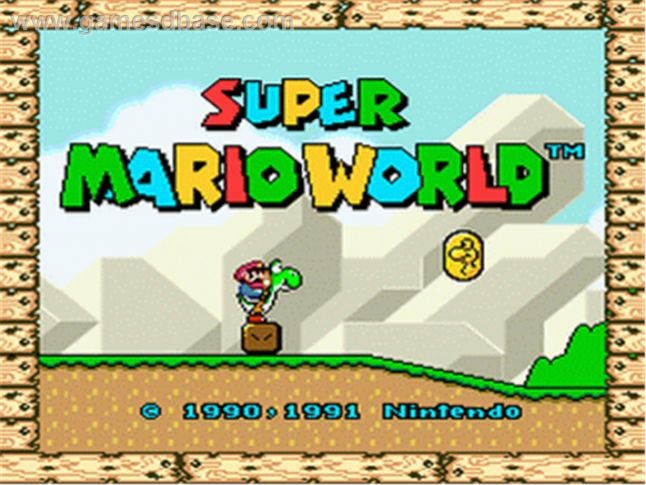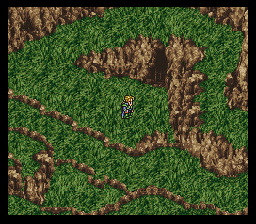Some of the most beloved and surprising videogames of the past year--Undertale, Stardew Valley, and the recent Headlander--have something in common: They all are direct descendants of Super Nintendo games.
25 years ago this month, the SNES arrived in North America. And more than the techno-jargon and 90s marketing buzzwords, what mattered were the games. We still feel the repercussions two and half decades on, with developers new and old leaning on classics from Nintendo’s 16-bit system for inspiration. For players, these places were like nothing we’d seen or imagined before. For those that would go on to make games, these experiences were seminal: the foundation on which a generation would base their future.
Looking back, it’s easy to see the SNES as the end of an era. Later hardware began our present evolutionary path of spinning discs with storage capacity that dwarfed cartridges, online competition, and massive 3D worlds. Things were simpler in 1991. All it took to stir the imagination was a plumber riding a dinosaur.
But of the 783 titles released for the console, only a relative few remain key touchstones indicative of the system’s best and most enduring work. We spoke to a number of game developers, producers, and designers about the SNES classics they grew up with and whose DNA remains a key part of the current gaming landscape. These are the games they singled out for their memorable innovations.
Which innovative SNES classics do you think have stood the test of time? Let us know in the comments!
Super Mario World
 Super Mario World (Nintendo, 1991) had a near-impossible task: follow up one of the most hyped and successful games of all time as the flagship release of the follow-up to the most hyped and successful system of all time. It was a complete success.
Super Mario World (Nintendo, 1991) had a near-impossible task: follow up one of the most hyped and successful games of all time as the flagship release of the follow-up to the most hyped and successful system of all time. It was a complete success.
“I remember incredibly vividly when I first saw it. I was on a trip to the States, in a video game shop in San Francisco. They had a demo unit with SMW. It was on the third level, the first level that has some water… It wasn’t out in the UK for quite awhile after that. So afterwards when I got back I was just staring at magazines until it came out.” - Rhodri Broadbent, Dakko Dakko (Floating Cloud God Saves the Pilgrims, Scram Kitty and his Buddy on Rails)
“I can remember playing Super Mario World for the first time and just feeling a ridiculous amount of joy and excitement, probably more intense than any other experience from my childhood.” - Eric Barone, ConcernedApe (Stardew Valley)
“The spin jump and breaking of bricks in general is largely the inspiration behind the Laser Drill in Axiom Verge” - Tom Happ, (Axiom Verge)
The Legend of Zelda: A Link to the Past
 Even after thirty years and over fifteen installments, many point to The Legend of Zelda: A Link to the Past (Nintendo, 1992) as the best in the franchise and, some say, all of gaming.
Even after thirty years and over fifteen installments, many point to The Legend of Zelda: A Link to the Past (Nintendo, 1992) as the best in the franchise and, some say, all of gaming.
“Greatest game ever made. Every moment is the best. Pulling out the Master Sword the first time? COME ON.” - Sean Krankel, Night School Studio (Oxenfree)
“I clearly remember seeing the rain and lighting in the beginning of Link to the Past for the first time – it probably doesn’t seem like a big deal now, but it was a big step [up] from NES.” - James Petruzzi, Bit Kid Inc. (Chasm)
“I didn't get a chance to play it until my family stayed at a hotel that had a SNES that was hooked up to a timer. Basically, you were charged something like $3-4 to your room and you got to play the SNES for about an hour before it asked for more money. When the hour was up, it would reset the console and wouldn't record any saves, so it was easily the worst way to try to play a game as large as A Link to the Past. That didn't stop me. I probably played through the intro and first dungeon at least ten times at various hotels before I finally had an opportunity to play the whole game… At the time, it just felt immense, a trait shared by most of the SNES games I remember.” - Alec Thomson, Hexecutable (Beglitched)
“The bosses in Zelda are [what] I consider to be the archetypes for pretty much all bosses. On Star Fox Command, the producer on that was actually one of the artists on Zelda 3. [Takaya Imamura.] He runs some of the more interesting games at Nintendo nowadays. - Rhodri Broadbent
“I'm not sure anyone's made a better game yet. Still, the first time I finished it, I was disappointed (though not surprised) there wasn't a Second Quest.” - Tom Happ
Super Metroid
 Samus Aran’s more recent first-person adventures in space are better known by some, but it is Super Metroid (Nintendo, 1994) that codified the 2D exploration genre, giving 16-bit players some of their most enduring memories.
Samus Aran’s more recent first-person adventures in space are better known by some, but it is Super Metroid (Nintendo, 1994) that codified the 2D exploration genre, giving 16-bit players some of their most enduring memories.
“We referenced Super Metroid extensively in the design process of Oxenfree, studying the map of Zebes. While Alex might not have earned a ton of new abilities, we used narrative beats and some basic upgrades to push exploration out from the center of a contiguous game world.” - Sean Krankel
“When I was an undergrad, one of my housemates owned a SNES and would regularly speedrun Super Metroid--we even had a drinking game about it. It was from him that I learned all the ways you could use secret moves in the game--Wall jumps? Shine sparks?!?--to play everything out of order. It amazed me that you could do this and the game was still completely coherent. With our game Beglitched, there is a narrative and there is plenty of explanation since the mechanics are kinda strange, but we were very careful to make sure that the world of the game still felt alien and slightly incomprehensible.” - Alec Thomson
“Incredible controls, and constantly oozes cool and badass-ness. Really felt like a world worth exploring.” - Chris King, Batterystaple Games (20XX)
“That was the first game that gave me a jump scare. Towards the end of the game, there’s the scene with the baby Metroid, who’s now all grown up, it comes out from the side of the screen and basically attacks you. I jumped out of my seat. I was playing it at night when I was supposed to be in bed. And my parents were asleep. It was all quiet. I had my TV turned all the way down. And I jumped--my hands were very clammy from that.” - Chris Johnston, Adult Swim Games (Headlander, Pocket Mortys)
Street Fighter II
 The Sega Genesis might have brought home Altered Beast, but Street Fighter II (Capcom, 1992) was the first time the most popular arcade game in the world could be played with on your couch with your friends.
The Sega Genesis might have brought home Altered Beast, but Street Fighter II (Capcom, 1992) was the first time the most popular arcade game in the world could be played with on your couch with your friends.
“Street Fighter II was the reason I, and many other people, bought a SNES. It redefined the concept of the home arcade experience.” - Phil Tossell, Nyamyam, Ltd. (Tengami)
“Before the SNES release, this game was everywhere: not just arcades but pizza restaurants, convenience stores, public bathrooms, funeral homes. It was a social thing that you would do everywhere outside of the house, just regularly battling strangers in public. Suddenly I can bring it home for a mere 70 bucks, memorize nonsensical inputs, and awkwardly crab claw my SNES gamepad while cussing out my best friend? Heaven.” - Sean Krankel
“Street Fighter II… sort of exemplified, ‘Wow, you really now can have arcade games at home.’ As a kid, I was so over the moon by that whole idea.” - Rhodri Broadbent
Final Fantasy VI [known in North America as Final Fantasy III]

Role-playing games were still a somewhat niche genre in North America when Final Fantasy VI (Square, 1994) came out, but those who played it were gobsmacked by its ambition, storytelling, and world-building.
“That was the first time an RPG captivated me enough to get all the way to the end. Especially the opera house scene. [It’s] just amazing what they did with such li
No tags.





































